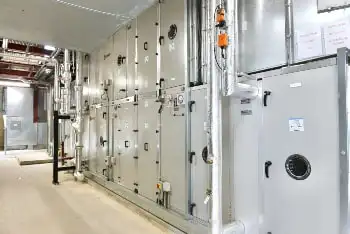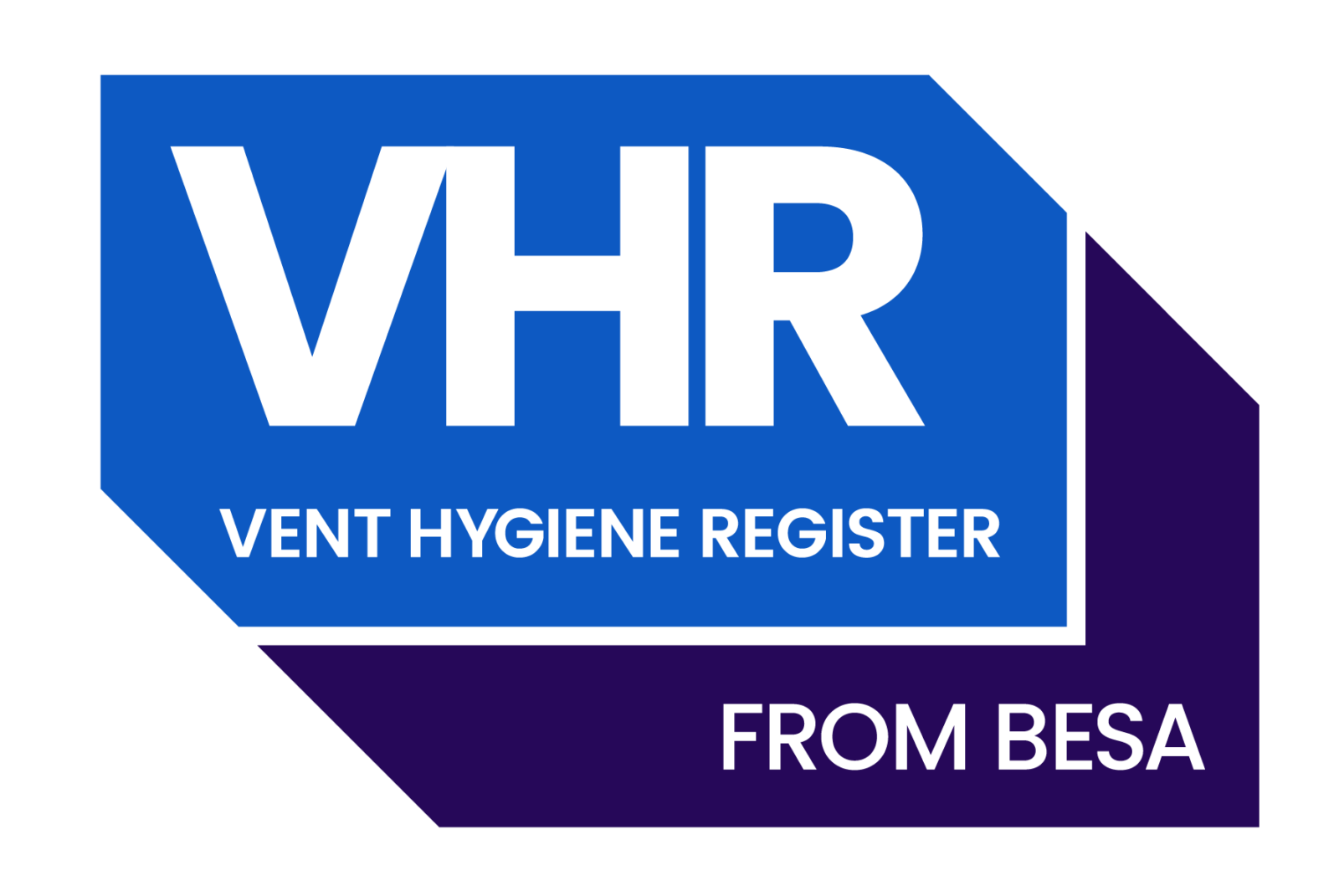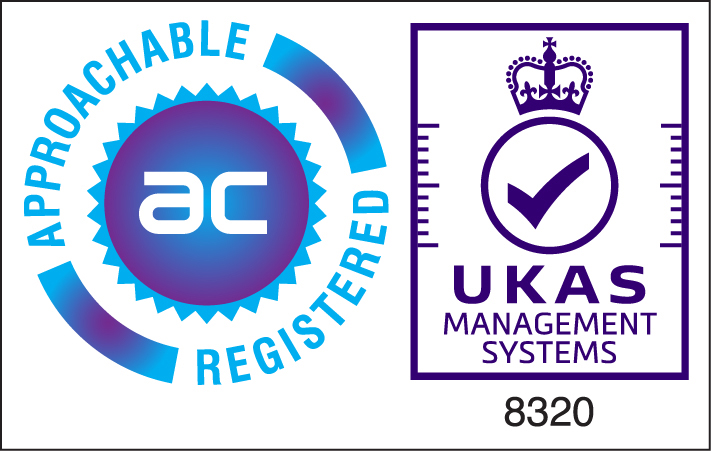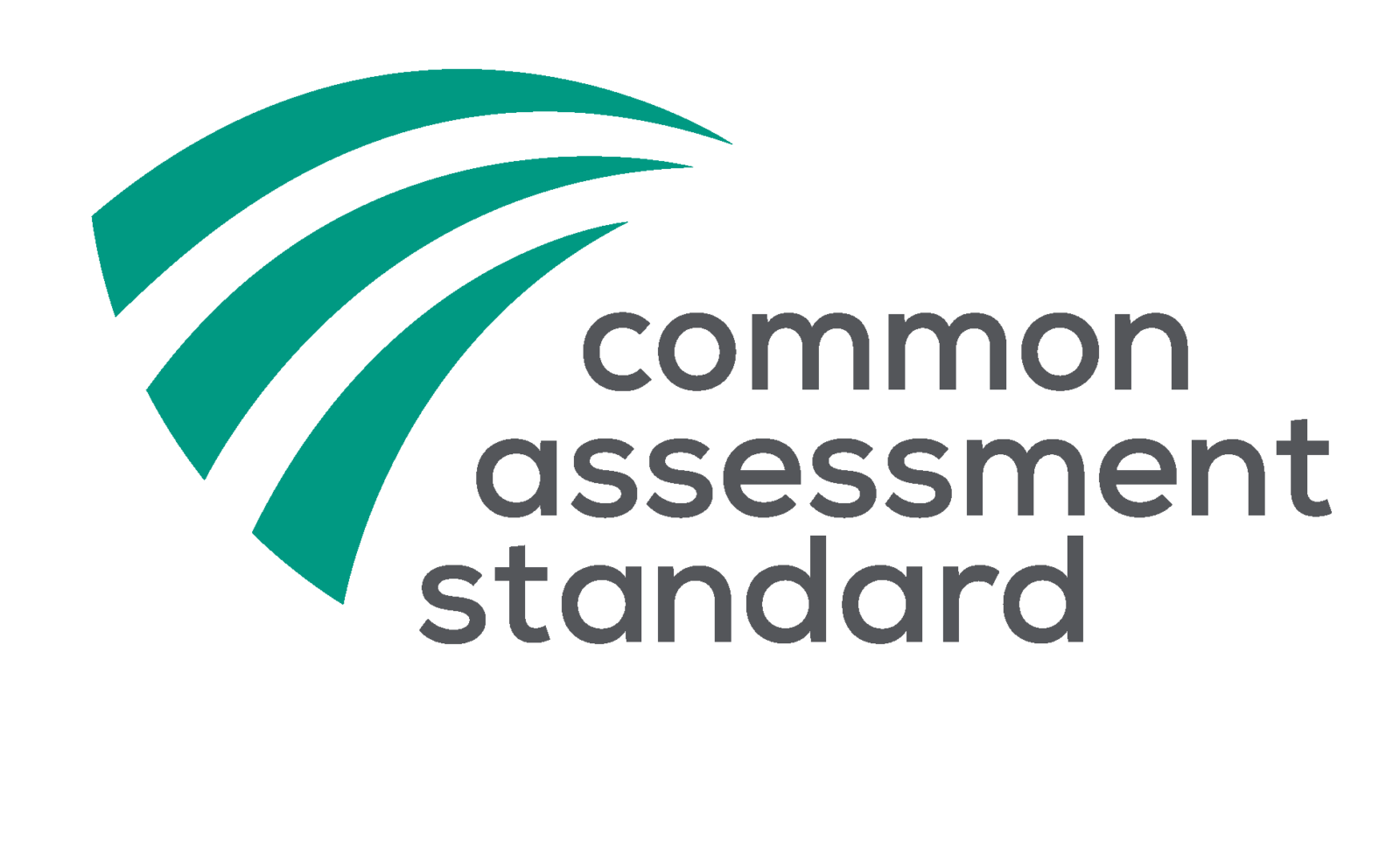Inside an AHU is far more complex than most people would think, it’s located at the very heart of a building’s ventilation system.
The AHU performs a significant role. It is in effect the heart of the building’s circulation system and ,like the heart, pumping clean oxygenated blood via the arterial system, air is pumped out to the extremities of the building pulsing warmed and oxygenated cleaned air to the rooms of the building.
Also, like the heart, it extracts stale vitiated air. Vitiated means used, exhausted, and awash with contaminants such as CO2 , airborne debris ,dust, human particulates (dead skin cells), viruses, bacteria and humidity. It does this via the extract ductwork network ,similar to the veins in the human body, funnelling on high pressure winds these unwanted contaminants away to atmosphere outside the building via the extract louvres.
All of these contaminants are filtered out from the extract air:a bit like the way the lungs clean the exhaling and inhaling air,- so, the filtration panels, and the more intensely filtering filter bags act like filtering lungs, and they hold back and remove all these contaminants from the dual airflows: those coming into the building and those going out of the building.
Air from outside and from within rooms, it removes unwanted dust and other types of particles from the air collected and adjusts its humidity and temperature. The AHU then supplies filtered and temperature-controlled air into the building via ductwork.
In this blog, we’ll take a good look at AHUs-air handling units-and figure out how they work. We’ll also look at what type of maintenance is required to promote effective operation and a hygienic environment for building users.
Understanding air handling units
In simple terms, an AHU-air handling unit can be described as a big fan in a metal box. There may be one or several of these fans on rooftops or in subbasements on in extremely large buildings, there could be several AHUs per floor. In Canary Wharf in London for example some of the buildings have 103 AHUs: 2 per floor on 50 floors and 3 downdraught massive Fresh Air Make Up (FAMU) Fans on the roof which serve the other 100 .All of these AHUs require a route to the outside air, which they take, heat, cool, coarse particle filter, fine particle filter, humidify or dehumidify, and sometimes even HEPA-filter in some environments. And this is just the Incoming Supply Air!
You can’t just pump air into the building without taking it away at the same time. It is the constant removal of vitiated air by the concomitant(complimentary and matching) extract ductwork systems. One without the other leads to poor airflow and low air quality.
The degree of complexity of an Air Handling unit revolves around its design and they are quite sophisticated and complicated pieces of kit!
There are heat sensors which constantly monitor the amount of heat being generated by the heating batteries.
There is usually one at the front of the AHU which takes the chill off the incoming air. This is to ensure that a sheet of water vapour laden ice does not form over the front of the AHU when it is running at high speed, as the negative air pressure of the fan will drop the temperature of air at 4°C down to 0°C and it will freeze over.
Chiller batteries cool the air like a large car-radiator stretching across the duct., same as a heater battery. The air can’t get past without blowing through the cooling fins of the battery, but it is important of course that the cool air isn’t too cool! That’s why you need a cooling thermostat to slow own the rate of the refrigerant flowing through the battery.
The fan speed needs to be controlled in accordance with the amount of heat or cold produced.
Then we get onto the filtration, there are usually a paper or cardboard pleated filter coarse filter bank. This catches most of the coarse stuff, then there is a second bank of bay filters which catch the smaller particles, like big windsocks stretched across the ducts.
These hold back the air and produces resistance. The more dirt is caught by the bag ,the more resistance it puts up to the airflow. So, you need resistance monitors to evaluated when the bags are so full that they are wasting energy and dumping filth down the ductwork into the occupied areas over the humans.
These airflows have to be matched to the fan power and to the heating and cooling capabilities of the batteries previously mentioned. Then there’s the humidity- if that’s not controlled ,you will get a terribly dry airflow which will produce a whole host of allergies and sick building syndrome reactions like itching eyes dry throat, coughing wheezing sneezing. And if there’s too much humidity of the wrong sort you run the risk of a Legionella outbreak ,and we sure don’t want that!
AHUs often serve large buildings used by many people, like shopping centres and theatres. One of the main reasons is that large facilities visited by many people must meet strict regulations regarding air cleanliness and the exhaustion of carbon dioxide. A large building must allow enormous amounts of air inside the structure and uses multiple AHUs and Extract AHUs to provide this air.
AHUs are also often used in factories and workplaces where highly combustible gases and powders are used and handled. In such operational environments, sparks caused by an electric device can result in an explosion. For this reason, AHUs are crucial pieces of equipment in such work areas.
AHUs can heat or cool rooms by themselves via ductwork systems. To do this they are connected up to hot water and chilled water producers such as boilers to produce warm water. Chilled water is made using refrigerant circuits of water or AC. Air handling units are fitted in machine rooms on site. As all their internal devices like humidifiers, fans and fins are integrated and co-ordinated within the AHU, professional inspections and maintenance checks are a complex and scientific procedure.
AHUs use heat exchangers built into them to exchange heat between heated or chilled air. As a result, AHUs offer outstanding operational flexibility. For instance, medium to large-sized facilities can be fitted with a combination of AHUS and chillers, while small to medium-sized buildings can employ a combination of ventilation AHUs.
What is involved in AHU cleaning and maintenance?
As mentioned earlier an AHU is comprised of a humidifier, filter, fans, and heat exchanger. Some AHUs for large-scale facilities are so large that a person can fit inside them, so sometimes engineers enter AHUs to perform maintenance. Air handling units are always fitted with a filter of one type or another, usually two types of filter. Filters are available in different types that range from a very coarse filter to an exceptionally fine filter known as a HEPA filter. Over time, these filters will fill up with dust. To ensure they can work efficiently, the AHU filters must be replaced, not cleaned.
The AHUs humidifier may also become adhered with salt from the water softeners in prolonged use so specially formulated chemicals are used that help adhered salts be removed before cleaning takes place. The AHUs impellers and fans will also collect dust over time. Again, chemicals are utilised to remove stubborn dirt and clean the fans. As part of the AHUs cooling operation, some parts of the heat exchanger will become exposed to condensation water. In some cases, this can lead to fungus growth. For this reason, the heat exchanger must also be cleaned using vacuum, abrasion, compressed air jetting, water spraying with chemical solution and rinse off procedure. Some sites bar the use of chemicals here.
As a rule, the best time to carry out AHU maintenance is twice per year. Since there is never a time when the AHU is not in use (and as there is always a requirement for fresh air) AHU maintenance always has to be done at night or the weekends, and then reactivated in the morning so as to make sure that buildings have a fresh supply of clean, cool air and that units continue to perform at optimum, professional AHU cleaning and maintenance is essential.
This is why you need to employ professionally trained people who know what they are doing at night so you don’t walk into a chemical war zone in the morning in the office where no one can breathe or work.
Experts in air handling unit maintenance
At Ventilation Surveys and Services Ltd we can provide support for national contracts, as well as both reactive and planned maintenance contracts to suit your individual needs.
Since forming in 2010, Ventilation Surveys and Services Ltd has risen to become the UK’s leading business providing Air Handling Unit Cleaning and Maintenance, Ductwork Cleaning and Disinfection services ,COVID19 Decontamination Supply ductwork fogging services and a high quality of ventilation hygiene contracts.
To discuss the current requirements of your facility and to receive a quote for an ongoing maintenance contract to keep your ventilation and air conditioning systems operating at top performance get in touch with us today.












